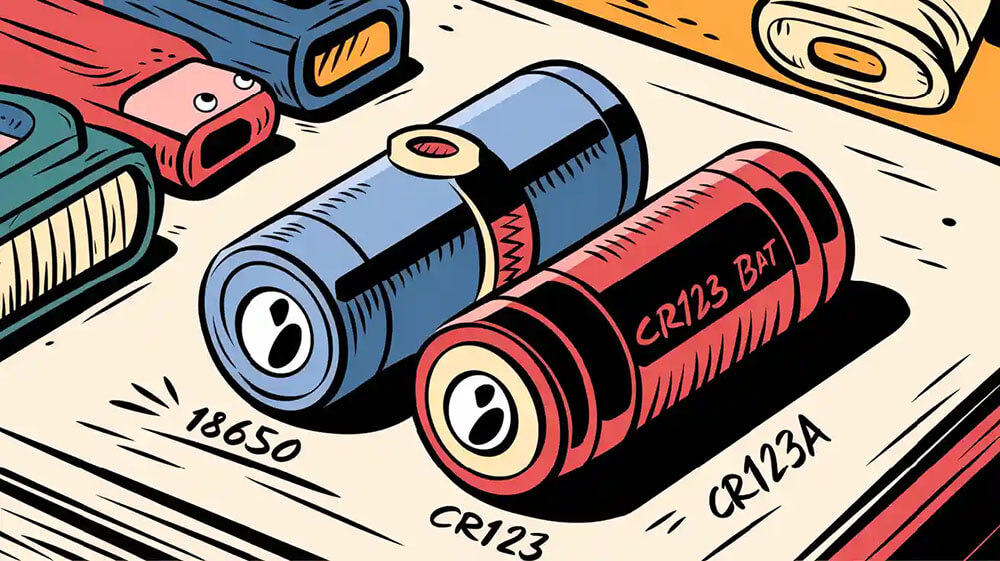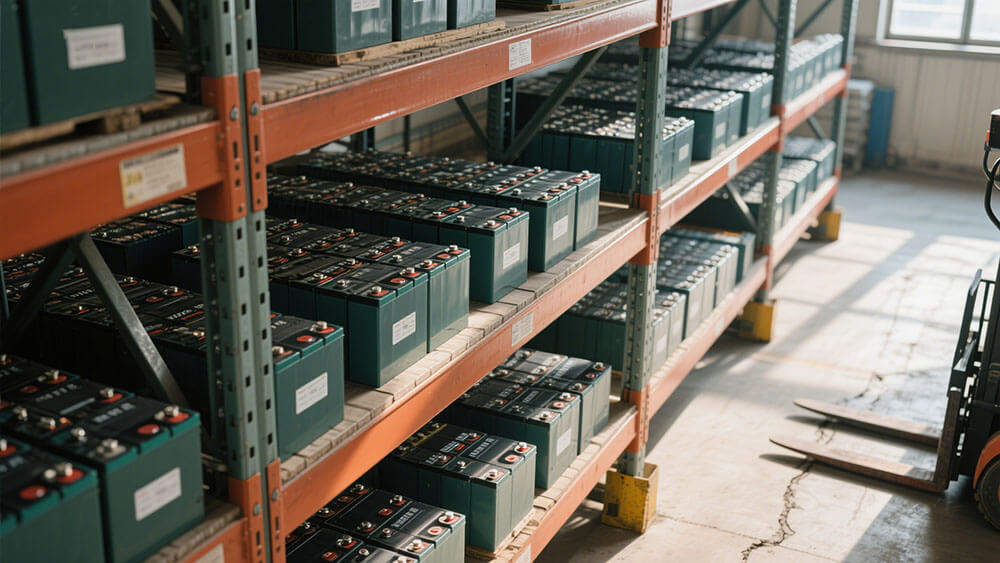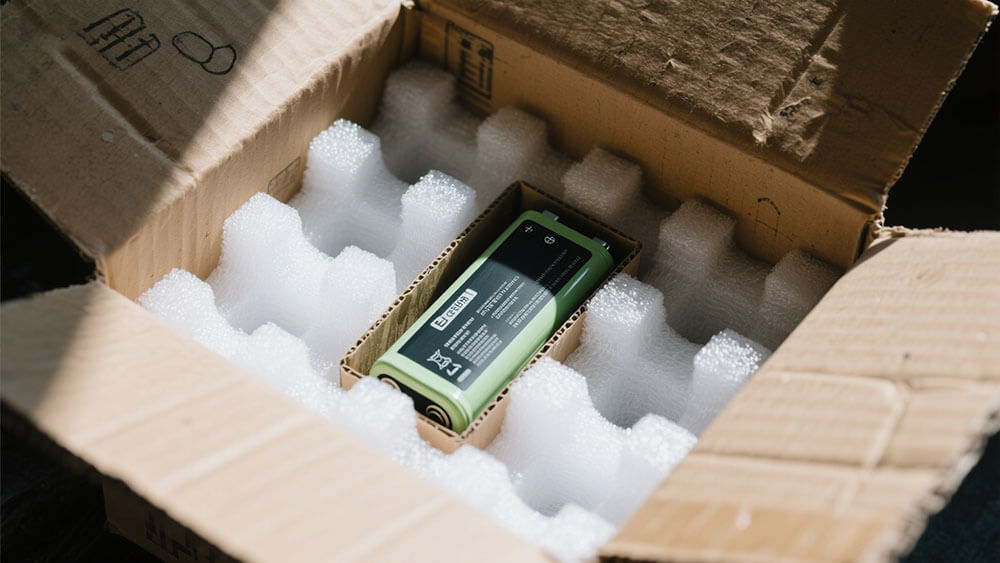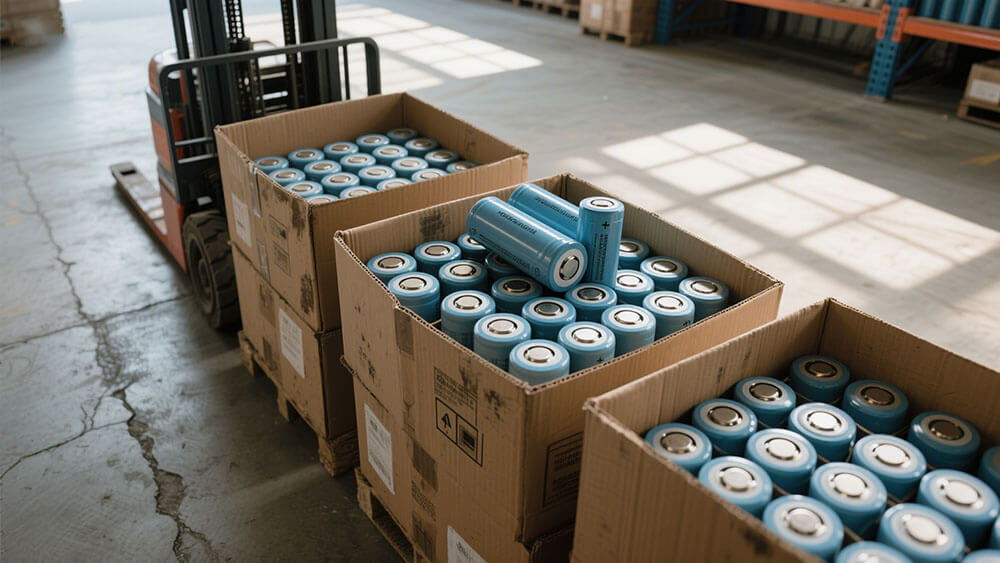
Choosing the right battery for your device impacts its performance and reliability. When considering 18650 vs CR123 vs CR123A batteries, it’s important to note that each type offers distinct advantages based on their design and chemistry. For example, CR123A batteries provide competitive runtime comparable to Duracell and Panasonic. Devices like the XENO S3A flashlight demonstrate compatibility with both 18650 and CR123 batteries, offering flexibility in power options.
Key Takeaways
18650 batteries can be recharged and work for powerful devices. They have 2000–3500mAh capacity and 3.6–3.7V voltage.
CR123 and CR123A batteries are small and cannot be recharged. They are good for low-power devices and last up to 10 years unused.
Use 18650 batteries if you need them often and want to reuse. CR123 types are better for rare use or emergencies.
Part 1: Understanding 18650 vs CR123 vs CR123A Batteries

1.1 Characteristics of 18650 Batteries
18650 batteries are cylindrical lithium-ion cells widely used in industrial applications, consumer electronics, and electric vehicles. Their dimensions—18mm in diameter and 65mm in length—make them larger than CR123 and CR123A batteries. These batteries offer high energy density, typically ranging from 160 to 270Wh/kg, and a platform voltage of 3.6–3.7V, making them suitable for devices with significant power demands.
Key Features:
Rechargeability: 18650 batteries are rechargeable, with a lifecycle of 1000–2000 cycles depending on the chemistry.
Capacity: They provide a capacity of 2000–3500mAh, ensuring extended runtime for high-drain devices.
Thermal Performance: While their thermal performance is less obvious compared to newer formats like 21700 batteries, they remain reliable under standard operating conditions.
Comparison with 21700 Batteries:
Characteristic | 18650 Battery | 21700 Battery |
|---|---|---|
Capacity | Lower | Higher |
Energy Density | Standard | Increased by 6% |
Thermal Performance | Less obvious | More obvious |
Polarization during discharge | Higher | Lower |
18650 batteries are ideal for applications requiring consistent energy output, such as robotics, medical devices, and security systems. Learn more about robotics applications here.
1.2 Characteristics of CR123 Batteries
CR123 batteries are compact, non-rechargeable lithium cells commonly used in security systems, flashlights, and cameras. Their smaller size—17mm in diameter and 34mm in length—makes them highly portable and suitable for devices with limited space.
Key Features:
Voltage: CR123 batteries deliver a nominal voltage of 3V, which is lower than 18650 batteries but sufficient for low-power devices.
Capacity: They typically offer a capacity of 1500mAh, providing reliable performance for intermittent use.
Shelf Life: These batteries boast an impressive shelf life of up to 10 years, making them ideal for emergency applications.
CR123 batteries are often preferred for security systems due to their long-lasting performance and compact design. Explore security system applications here.
1.3 Characteristics of CR123A Batteries
CR123A batteries are a variant of CR123 batteries, sharing similar dimensions and chemistry but optimized for higher performance. These batteries are widely used in consumer electronics, medical devices, and infrastructure applications.
Key Features:
Enhanced Capacity: CR123A batteries offer slightly higher capacity compared to standard CR123 batteries, ensuring longer runtime.
Compatibility: They are compatible with a wide range of devices, including flashlights and cameras.
Energy Efficiency: CR123A batteries are designed for efficient energy usage, reducing waste and improving device performance.
CR123A batteries are an excellent choice for applications requiring reliable power in a compact form factor. Learn more about consumer electronics applications here.
Part 2: Performance Comparison of 18650 vs CR123 vs CR123A Batteries

2.1 Energy Capacity and Output
When comparing energy capacity and output, 18650 batteries stand out due to their higher capacity and voltage. These batteries typically offer a capacity range of 1800–3500mAh and a nominal voltage of 3.7V. In contrast, CR123 and CR123A batteries provide a capacity of 1400–1500mAh with a lower voltage of 3.0V. This makes 18650 batteries more suitable for high-drain devices, such as industrial tools and robotics.
Attribute | CR123A Battery | 18650 Battery |
|---|---|---|
Capacity (mAh) | 1400–1500 | 1800–3500 |
Voltage | 3.0 | 3.7 |
Recharge Cycles | N/A (single-use) | 500+ |
Typical Runtime | Short-term | Extended |
The higher energy density of 18650 batteries ensures consistent performance in demanding applications. However, CR123 and CR123A batteries excel in compact devices where space is limited.
2.2 Rechargeability and Lifecycle
Rechargeability is a key differentiator between these battery types. 18650 batteries are rechargeable, offering over 500 charge cycles, which makes them cost-effective for frequent use. CR123 and CR123A batteries, on the other hand, are single-use and designed for applications requiring long shelf life, such as security systems. If you prioritize sustainability and long-term savings, rechargeable 18650 batteries are the better choice.
For more on sustainable battery solutions, explore our sustainability initiatives.
2.3 Runtime and Efficiency
Runtime and efficiency vary significantly across these batteries. Laboratory tests show that 18650 batteries deliver extended runtime and consistent output, making them ideal for high-performance devices. For example, a 18650 battery can power a device at 225 lumens for 2.8 hours, outperforming CR123 batteries, which provide a shorter runtime under similar conditions.
Battery Type | Output (lumens) | Runtime (hours) |
|---|---|---|
18650 | 225 | 2.8 |
CR123 | 225 | < 2.8 |
CR123A | N/A | N/A |
While CR123 and CR123A batteries are efficient for intermittent use, 18650 batteries are better suited for applications requiring sustained power. For custom battery solutions tailored to your needs, visit Large Power consultation page.
Part 3: Factors to Consider When Choosing 18650 vs CR123 vs CR123A Batteries

3.1 Device Compatibility and Technical Requirements
Understanding your device’s technical requirements is crucial when selecting between 18650, CR123, and CR123A batteries. Devices designed for high-drain applications, such as industrial tools or robotics, often require the higher voltage and capacity offered by 18650 batteries. These batteries deliver a nominal voltage of 3.6–3.7V, making them suitable for devices with significant power demands. On the other hand, CR123 and CR123A batteries, with their compact size and 3.0V output, are better suited for low-power devices like security systems or consumer electronics.
Always check your device’s user manual for voltage and size specifications. Using an incompatible battery can lead to performance issues or even damage. For custom battery solutions tailored to your device’s needs, consider consulting experts at Large Power.
3.2 Usage Frequency and Power Demands
Your device’s usage frequency and power demands play a significant role in battery selection. For devices requiring frequent use, rechargeable 18650 batteries offer long-term cost savings and sustainability. These batteries can handle over 500 charge cycles, making them ideal for applications like medical devices or electric vehicles.
For intermittent use or emergency applications, CR123 and CR123A batteries provide reliable performance with a shelf life of up to 10 years. Lithium-ion batteries, like 18650 cells, excel in long-duration energy needs, while CR123 variants are better for peak demands. This distinction ensures you choose the right battery for your specific application.
3.3 Portability, Size, and Weight Considerations
Portability is another critical factor. If your device prioritizes compactness, CR123 and CR123A batteries are excellent choices due to their smaller size and lighter weight. Their dimensions (17mm x 34mm) make them ideal for handheld devices like flashlights. However, if your application can accommodate larger batteries, 18650 cells provide superior energy density and runtime.
Balancing size, weight, and energy requirements ensures optimal performance. For portable devices, prioritize lightweight options, while stationary applications can benefit from the higher capacity of 18650 batteries.
Understanding the differences between 18650, CR123, and CR123A batteries helps you make informed decisions. For high-drain devices, 18650 batteries offer superior capacity and rechargeability. CR123 and CR123A batteries excel in compact, low-power applications. Always match your battery choice to your device’s technical needs. For tailored solutions, consult Large Power.
FAQ
1. What is the difference between CR123 and CR123A batteries?
CR123A batteries offer slightly higher capacity and energy efficiency compared to CR123 batteries. Both share similar dimensions and chemistry but differ in performance optimization.
Tip: CR123A batteries are ideal for compact devices requiring extended runtime. Learn more about consumer electronics applications.
2. Are 18650 batteries suitable for medical devices?
Yes, 18650 batteries provide high energy density and rechargeability, making them suitable for medical devices requiring consistent power output and long-term use.
Note: For tailored medical battery solutions, visit Large Power.
3. How do I choose the right battery for industrial applications?
Select 18650 batteries for high-drain industrial devices due to their superior capacity and lifecycle. CR123A batteries work well for compact, low-power tools.
Battery Type | Best For | Key Feature |
|---|---|---|
18650 | High-drain industrial devices | Rechargeable, 3.7V |
CR123A | Compact tools | Long shelf life, 3.0V |
Call to Action: Consult Large Power for custom industrial battery solutions.




